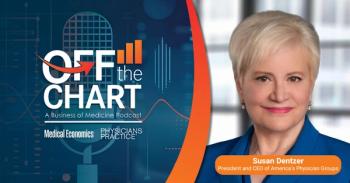
Report Helps Physicians to Protect Patients’ Financial Well-Being
CMS takes a positive step toward price transparency by disclosing hospital pricing.
The Federal government collects data on just about everything, including healthcare. Enormous amounts of data. But it has little value to the public unless it is made public. That’s when it becomes information - actionable, usable, and valuable.
CMS just did a very, very good thing for the American public and independent physicians in CMS gain-sharing programs. It
In accountable care organizations (ACOs), physicians need to consider financial implications of one institution over another. But, every physician, even hospital employed physicians, should be engaging their patients as part of shared decision making about which facility to use when an admission is required.
Here’s why. The prices for the same services can be wildly different.
Let’s look at two randomly selected small cities starting with Worchester, Mass., where there are four hospitals. To provide care for a patient with a respiratory infection with major complications (MCC – DRG 177), UMass Medical Center charges more than $49,000 and receives an average total payment of $19,541, while nearby St. Vincent Hospital charges $17,687.36 and receives an average total payment of $14,261. That translates to an average out-of-pocket difference for a patient with a 20 percent copay of more than $1,000.
How about Albany, New York? Albany Medical Center charges more than $101,000 for the same DRG 177 with an average reimbursement of $35,689. Nearby St. Peter’s Hospital charges just over $34,000 with an average reimbursement of $10,574. The patient’s out of pocket difference between that same 20 percent c-pay? That’s $5,023 more for Albany Medical Center.
To be fair, both UMass and Albany Medical Center are teaching hospitals, which contributes to the pricing and reimbursement differentials. But should the cost of training new physicians fall squarely on your patients? Not unless they absolutely, positively have to go there and do so knowing they will pay more.
The extremes, Crozer Chester Medical Center in the Philadelphia area, which charges $232,552, and John Ed Chambers Memorial Hospital in the Little Rock, Ark., area, which charges $6,984, both for DRG 177, are irrelevant unless you practice in those areas. Medicine is local, and what counts is what the hospitals in your area charge and receive. We are providing a link to the CMS data further down so that you can check your local hospital rates for a variety of diagnostic related groups.
Now, imagine the impact of these kinds of choices on ACOs and physician groups in gain sharing agreements or who take risk? Are you willing to pay the extra $13,000 to $26,000 to treat your patient at Albany Medical Center? Is there a real difference in outcomes? What is the value (outcome/cost) proposition? These are the thought processes that physicians will have to engage in as we move to an accountable care world. It is also the most effective way to ensure that more people have access to affordable healthcare.
Having a choice of institutions and holding multiple admitting privileges is important if you are going to be able to offer your patients choice when it is appropriate. If you are part of a gain-sharing or risk taking group, it is a necessity or you may find yourself receiving fewer referrals from that high performing group. As a physician, consider your obligation to point out to your patients the financial impact of these determinations. Price transparency will come with its own set of responsibilities because it is in the public interest, and yours, and means that your adding being a responsible shepherd of your patient’s financial interests lies squarely with your admission orders.
Lastly, leading the way by not waiting for CMS to post your prices publicly is in your best interest.
Interested in hospital charges in your area? Click here for
Newsletter
Optimize your practice with the Physicians Practice newsletter, offering management pearls, leadership tips, and business strategies tailored for practice administrators and physicians of any specialty.




